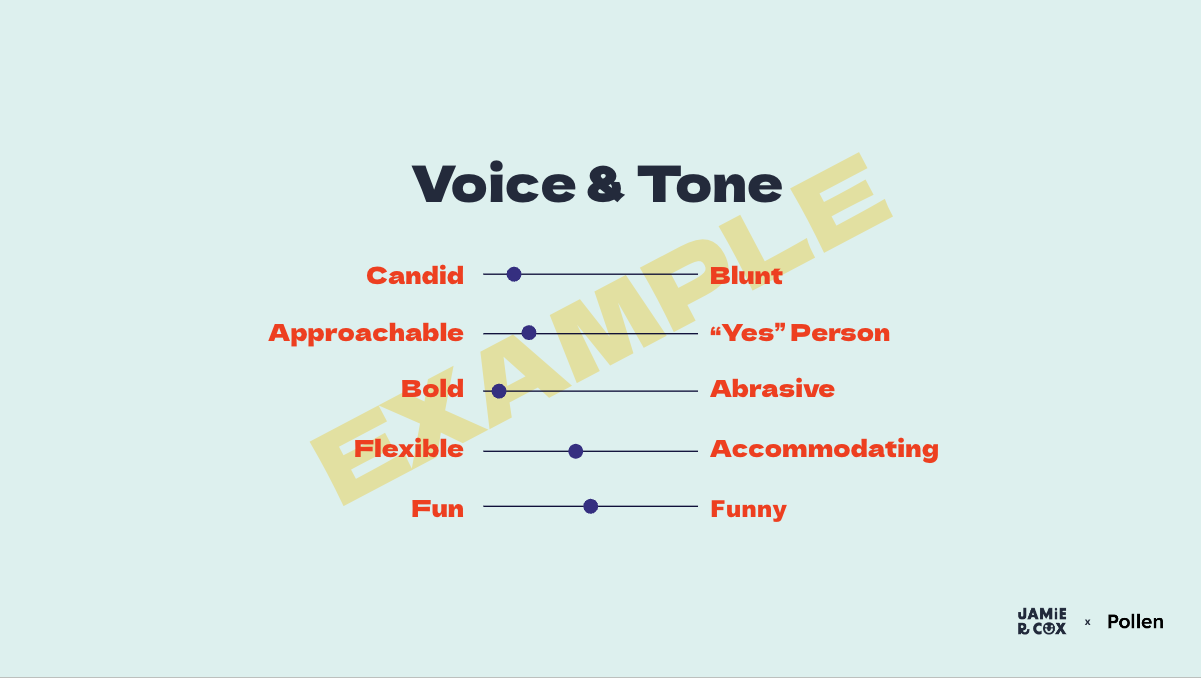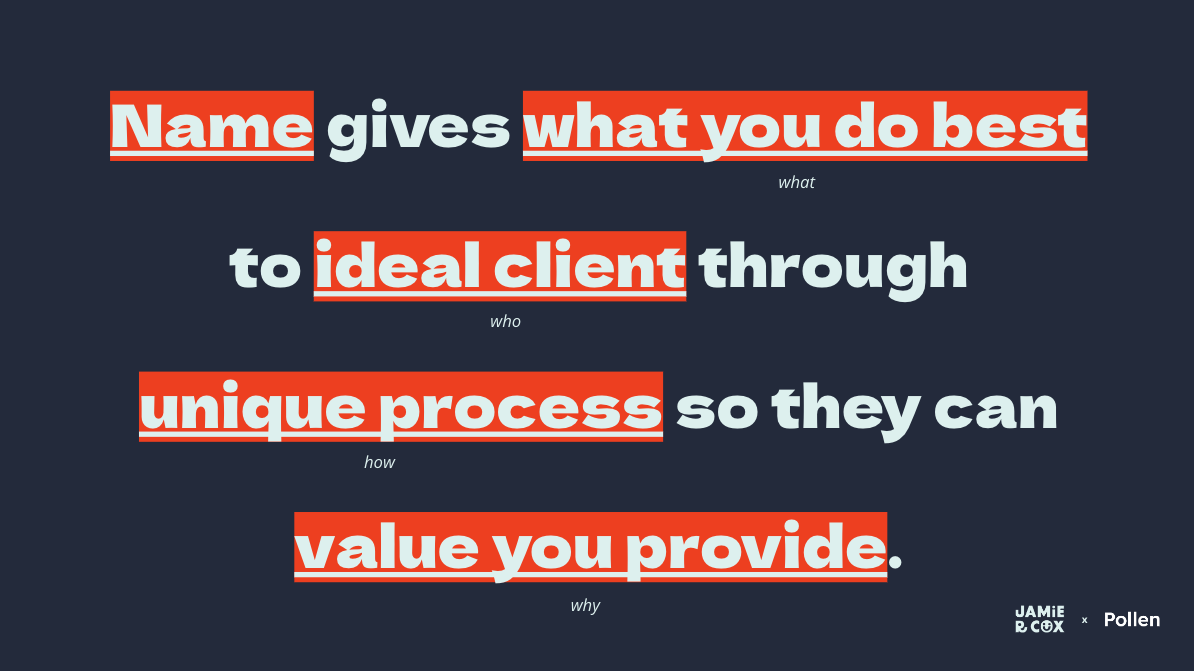Create Voice and Tone Guidelines
Having voice and tone guidelines is important because they ensure consistent, clear, and relatable communication across all platforms, helping to build a strong and recognizable brand identity.
Developing voice and tone guidelines means you have a clear idea of how you want to sound to your prospective and current clients and the words you use and don't use. Defining your voice and tone makes it easier to implement a consistent feel across your different messages and channels.
Create a voice and tone scale to visualize the different aspects of your brand’s personality. This scale helps you strike a balance between the positive traits you want to embody and the extremes you want to avoid.

List the key characteristics that define your brand’s voice. Think about these as sliding scales rather than absolutes. For example:
- Candid vs. Blunt: You want to be open and honest (candid) but not hurtful or overly direct (blunt).
- Approachable vs. Pushover: Aim to be friendly and accessible without compromising your boundaries.
- Bold vs. Abrasive: Be confident in your messaging while avoiding being harsh.
- Flexible vs. Accommodating: Stay adaptable and open to change without becoming a “yes person.”
- Fun vs. Funny: Bring an enjoyable and engaging approach without forcing humor.
Using the scales, plot where you want your brand to fall for each characteristic. This visualization helps ensure you maintain the right balance in your messaging. For instance, you may want to be more candid than blunt, more approachable than a pushover, and so on.
Avoid using overly simplistic binary terms like “nice” vs. “mean.” Instead, explore the nuanced characteristics that more accurately represent your brand’s personality. For example:
- Kind vs. Overly Accommodating: Aim to be compassionate and understanding without being overly submissive.
- Honest vs. Harsh: Be truthful in your communications while being considerate of others' feelings.
Create a voice and tone scale to visualize the different aspects of your brand’s personality. This scale helps you strike a balance between the positive traits you want to embody and the extremes you want to avoid.

List the key characteristics that define your brand’s voice. Think about these as sliding scales rather than absolutes. For example:
- Candid vs. Blunt: You want to be open and honest (candid) but not hurtful or overly direct (blunt).
- Approachable vs. Pushover: Aim to be friendly and accessible without compromising your boundaries.
- Bold vs. Abrasive: Be confident in your messaging while avoiding being harsh.
- Flexible vs. Accommodating: Stay adaptable and open to change without becoming a “yes person.”
- Fun vs. Funny: Bring an enjoyable and engaging approach without forcing humor.
Using the scales, plot where you want your brand to fall for each characteristic. This visualization helps ensure you maintain the right balance in your messaging. For instance, you may want to be more candid than blunt, more approachable than a pushover, and so on.
Avoid using overly simplistic binary terms like “nice” vs. “mean.” Instead, explore the nuanced characteristics that more accurately represent your brand’s personality. For example:
- Kind vs. Overly Accommodating: Aim to be compassionate and understanding without being overly submissive.
- Honest vs. Harsh: Be truthful in your communications while being considerate of others' feelings.
Once you narrow in on the characteristics of your brand’s voice and tone, you want to further define what this means to you and how it might influence what you do or don’t say. You can build a table like the one below to help you.
Next, identify words and phrases commonly used in your industry that might be losing their meaning or are too technical for your audience. Develop alternative phrases that convey the same message in a more relatable and understandable way. For example:
- Instead of “brand strategy,” use “building a roadmap for your marketing.”
- Instead of “brand vision,” say “where you want your brand to go.”
- Instead of “brand alignment,” refer to “building team cohesion” or “ensuring everyone is on the same page.”

independent consulting business to the next level.







